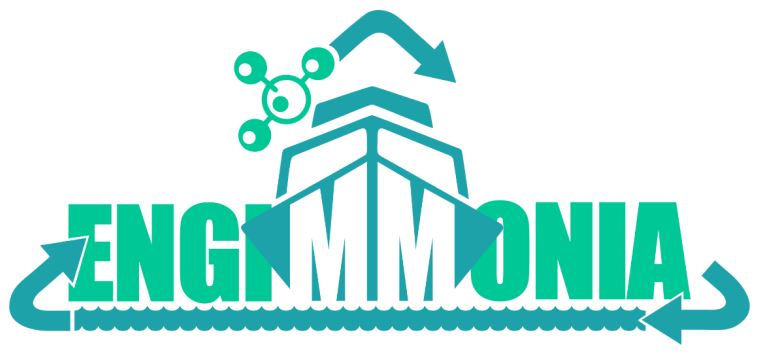ENGIMMONIA – Decarbonizing the Shipping Sector
C-Job is a firm believer in the need for renewable fuels and has a dedicated R&D department that looks into alternative energy options including hydrogen, methanol, and ammonia. We are excited to be joining a consortium of companies and organizations from the maritime sector that together are looking at ways of contributing to the decarbonization of our industry. The four-year, EU-funded project – designated ENGIMMONIA – has two main objectives; accelerating the introduction of alternative fuels, specifically ammonia, and the identification and transfer to the maritime sector of proven clean energy technologies already in use in terrestrial applications.
“In terms of ship design and operation, vessels powered by ammonia or other clean energy solutions will require us to rethink what is considered standard,” says Nikos Papapanagiotou, C-Job’s team leader on the project and Director of C-Job Athens. “Currently, there’s little difference between vessels in how diesel engines are positioned and integrated. We need to break away from these standards and think outside the box when incorporating renewable marine fuels into the design.”

ENGIMMONIA will run for the next four years. C-Job was chosen as the sole ship design and engineering company, together with other engineering and research institutes to form an expert consortium. Three Greek shipping companies have each made a vessel available; a tanker, a passenger ferry, and a container vessel, respectively, for use as test beds as they go about their usual duties. “C-Job is assisting on system and technology integration and managing design-related modifications,” explains Nikos. “Additionally, we will support the supervision of the works when the technology is incorporated into the test vessels, and develop guidelines for the integration in next generation ship designs.”
Why ammonia?
Ammonia has long been recognized as a potential transition fuel from hydrocarbons to zero emissions. A compound of nitrogen and hydrogen, it is already available in industrial quantities and is suitable for use in suitably modified internal combustion engines. However, burning it in this way produces nitrous oxide, a greenhouse gas, as a by-product. The ammonia engine for ENGIMMONIA will be designed, engineered, and built by leading engine manufacturer MAN. It will then be evaluated under laboratory conditions with the data shared between the project partners. At C-Job, we will use the information to develop guidelines describing how ammonia engines should be best installed and the design implications for both retrofit and new build vessels. This aspect of the program will also involve the development of an exhaust after-treatment system to neutralize the NO2 emissions when using an internal combustion engine.
As part of the identification and transfer of clean energy technologies from terrestrial to maritime applications, the project team will look at adapting proven waste heat recovery systems for use with maritime ammonia engines. A prototype using Organic Rankine Cycle technology will be designed, built, and installed on the tanker and evaluated and optimized over time, with a view to making it suitable for upscaling in the future.
Other existing technologies with the potential to be implemented in the short to medium term include adsorption chilling, which exploits various waste heat sources to realize a water cooling effect. A system will be installed on the passenger vessel to cool certain areas and thereby reduce the power consumption of the conventional HVAC. Newly developed Photo-Voltaic modules will also be applied to selected areas on all three demo-vessels to evaluate their ability to harvest solar energy and their durability in the harsh marine environment. The final element of ENGIMMONIA is the development and integration of the software for fuel energy heat data collection and real-time optimization on board.
Supporting technology providers
C-Job will initially be supporting the technology providers with its experience and assisting them in the integration of the systems on board the test vessels. In the second phase we will review the designs and evaluate them with the objective of creating a roadmap with guidelines to allow them to be replicated in the next generation of vessels. We will also be involved in drawing up the regulatory framework and classification rules for future low emission vessels.
“It will be interesting to see the actual impacts of these technologies and determine how they can best be implemented,” continues Nikos Papapanagiotou. “Especially given the new regulations and standards that are coming through. In the near future there will almost certainly be a combination of low emission fuels in use depending on vessel types and applications, but the great thing about ammonia is that it is widely available now, so it’s an attractive place to start!”
For more information on ENGIMMONIA go to https://www.engimmonia.eu/
This project has received funding from the European Union’s Horizon 2020 research and innovation programme under grant agreement No 955413.

